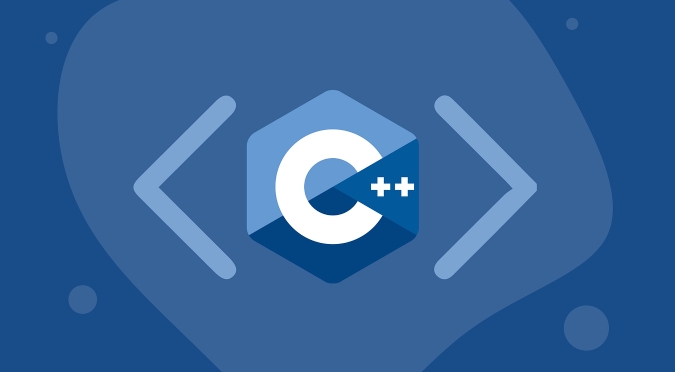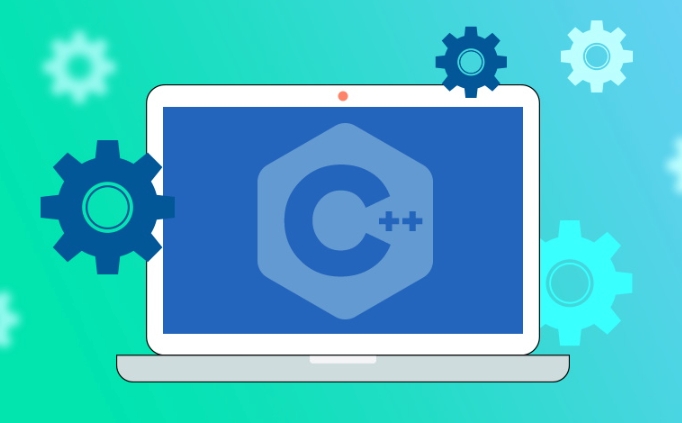C The method to implement serialization includes manual implementation and use of third-party libraries. Manual implementation is suitable for simple structures. You need to read and write byte streams in the order of fields, pay attention to string boundaries and cross-platform issues; common steps: 1. Write object fields into byte streams in sequence 2. Read in the same order when deserializing 3. You need to record the length or ending characters when processing strings 4. Consider the differences in byte order and alignment. Use third-party libraries to suit complex needs. Common solutions: 1. Boost.Serialization supports multiple formats but depends on Boost 2. protobuf is efficient across languages, suitable for communication and persistence 3. FlatBuffers directly access data without parsing 4. MessagePack is lightweight and cross-platform; taking protobuf as an example process as defining.proto files, generating code, and calling class methods to complete serialization/deserialization. Notes include version compatibility, data security, performance optimization and readability selection.

C itself does not have a built-in serialization mechanism like Java or Python, but through some common methods, we can implement persistent storage or network transmission of object state. The key is to understand the purpose of serialization and choose the appropriate implementation method.

What is serialization?
Serialization refers to converting the state of an object into a form that can be stored or transferred (such as binary, JSON, XML, etc.). In C, this process is usually implemented manually, or done with the help of a third-party library.
How to manually implement basic serialization?
If you only need to deal with simple data structures, writing serialization and deserialization functions manually is a viable option.

- Basic idea : Write each field of the object into a byte stream in sequence (such as
std::ofstream) and read it in the same order when deserialized. - Note the field order : the field order must be consistent during serialization and deserialization, otherwise the data will be incorrect.
- Be careful when processing strings : strings need to record length or end with
\0, otherwise the boundary cannot be judged during reading. - Consider cross-platform issues : for example, different systems may have different endian orders (big endian/little endian), and the structure alignment may also be different.
For example, a simple structure:
struct Person {
int age;
std::string name;
void serialize(std::ostream& os) const {
os.write(reinterpret_cast<const char*>(&age), sizeof(age));
uint32_t len = name.size();
os.write(reinterpret_cast<const char*>(&len), sizeof(len));
os.write(name.data(), len);
}
void deserialize(std::istream& is) {
is.read(reinterpret_cast<char*>(&age), sizeof(age));
uint32_t len;
is.read(reinterpret_cast<char*>(&len), sizeof(len));
name.resize(len);
is.read(&name[0], len);
}
};Use third-party libraries to simplify operations
For more complex requirements, such as nested structures, cross-language compatibility, network communication, etc., it is recommended to use existing serialization libraries.

Common C serialization libraries include:
- Boost.Serialization : Powerful, supports multiple formats, but relying on the Boost library, the compilation may be heavier.
- Google Protocol Buffers (protobuf) : Good cross-language support, high efficiency, suitable for network communication and persistence.
- FlatBuffers : Access serialized data without parsing, suitable for performance-sensitive scenarios.
- MessagePack : JSON-like binary format, lightweight and cross-platform.
A simple process to use protobuf:
- Define the
.protofile description structure - Use protoc to compile and generate C code
- Serialization/deserialization using generated classes
For example:
message Person {
int32 age = 1;
string name = 2;
}Then:
Person person;
person.set_age(25);
person.set_name("Tom");
std::string buffer;
person.SerializeToString(&buffer); // Serialize Person p2;
p2.ParseFromString(buffer); // DeserializationIssues to be aware of
When using serialization, some details are easily overlooked but are important:
- Version compatibility : If the structure changes (such as adding and deleting fields), make sure that the old data can be correctly parsed by the new code.
- Security : Don't blindly trust deserialized data, especially when it comes from the network, to prevent malicious input.
- Performance : For large amounts of data or high frequency operations, select efficient serialization formats and libraries.
- Readability : If you need debugging or manual viewing, you can choose JSON, XML and other formats.
Basically that's it. Manual implementation is not complicated but it is easy to ignore details. Using libraries is easier to use but also requires understanding the basic principles.
The above is the detailed content of Serialization in C. For more information, please follow other related articles on the PHP Chinese website!

Hot AI Tools

Undress AI Tool
Undress images for free

Undresser.AI Undress
AI-powered app for creating realistic nude photos

AI Clothes Remover
Online AI tool for removing clothes from photos.

Clothoff.io
AI clothes remover

Video Face Swap
Swap faces in any video effortlessly with our completely free AI face swap tool!

Hot Article

Hot Tools

Notepad++7.3.1
Easy-to-use and free code editor

SublimeText3 Chinese version
Chinese version, very easy to use

Zend Studio 13.0.1
Powerful PHP integrated development environment

Dreamweaver CS6
Visual web development tools

SublimeText3 Mac version
God-level code editing software (SublimeText3)
 What is high-frequency virtual currency trading? The principles and technical implementation points of high-frequency trading
Jul 23, 2025 pm 11:57 PM
What is high-frequency virtual currency trading? The principles and technical implementation points of high-frequency trading
Jul 23, 2025 pm 11:57 PM
High-frequency trading is one of the most technologically-rich and capital-intensive areas in the virtual currency market. It is a competition about speed, algorithms and cutting-edge technology that ordinary market participants are hard to get involved. Understanding how it works will help us to have a deeper understanding of the complexity and specialization of the current digital asset market. For most people, it is more important to recognize and understand this phenomenon than to try it yourself.
 C vector get first element
Jul 25, 2025 am 12:35 AM
C vector get first element
Jul 25, 2025 am 12:35 AM
There are four common methods to obtain the first element of std::vector: 1. Use the front() method to ensure that the vector is not empty, has clear semantics and is recommended for daily use; 2. Use the subscript [0], and it also needs to be judged empty, with the performance comparable to front() but slightly weaker semantics; 3. Use *begin(), which is suitable for generic programming and STL algorithms; 4. Use at(0), without manually null judgment, but low performance, and throw exceptions when crossing the boundary, which is suitable for debugging or exception handling; the best practice is to call empty() first to check whether it is empty, and then use the front() method to obtain the first element to avoid undefined behavior.
 How to develop AI-based text summary with PHP Quick Refining Technology
Jul 25, 2025 pm 05:57 PM
How to develop AI-based text summary with PHP Quick Refining Technology
Jul 25, 2025 pm 05:57 PM
The core of PHP's development of AI text summary is to call external AI service APIs (such as OpenAI, HuggingFace) as a coordinator to realize text preprocessing, API requests, response analysis and result display; 2. The limitation is that the computing performance is weak and the AI ecosystem is weak. The response strategy is to leverage APIs, service decoupling and asynchronous processing; 3. Model selection needs to weigh summary quality, cost, delay, concurrency, data privacy, and abstract models such as GPT or BART/T5 are recommended; 4. Performance optimization includes cache, asynchronous queues, batch processing and nearby area selection. Error processing needs to cover current limit retry, network timeout, key security, input verification and logging to ensure the stable and efficient operation of the system.
 C bit manipulation example
Jul 25, 2025 am 02:33 AM
C bit manipulation example
Jul 25, 2025 am 02:33 AM
Bit operation can efficiently implement the underlying operation of integers, 1. Check whether the i-th bit is 1: Use n&(1
 C Standard Library Explained
Jul 25, 2025 am 02:11 AM
C Standard Library Explained
Jul 25, 2025 am 02:11 AM
The C standard library helps developers improve code quality by providing efficient tools. 1. STL containers should be selected according to the scene, such as vector suitable for continuous storage, list suitable for frequent insertion and deletion, and unordered_map is suitable for fast search; 2. Standard library algorithms such as sort, find, and transform can improve efficiency and reduce errors; 3. Intelligent pointers unique_ptr and shared_ptr effectively manage memory to avoid leakage; 4. Other tools such as optional, variant, and function enhance code security and expressiveness. Mastering these core functions can significantly optimize development efficiency and code quality.
 C function example
Jul 27, 2025 am 01:21 AM
C function example
Jul 27, 2025 am 01:21 AM
Functions are the basic unit of organizing code in C, used to realize code reuse and modularization; 1. Functions are created through declarations and definitions, such as intadd(inta,intb) returns the sum of the two numbers; 2. Pass parameters when calling the function, and return the result of the corresponding type after the function is executed; 3. The function without return value uses void as the return type, such as voidgreet(stringname) for outputting greeting information; 4. Using functions can improve code readability, avoid duplication and facilitate maintenance, which is the basic concept of C programming.
 Understanding the C ABI
Jul 24, 2025 am 01:23 AM
Understanding the C ABI
Jul 24, 2025 am 01:23 AM
C ABI is the underlying rule that the compiler follows when generating binary code, which determines mechanisms such as function calls, object layout, name adaptation, etc. 1. It ensures that different compilation units interact correctly, 2. Different compilers or versions may adopt different ABIs, affecting dynamic library links, STL transfers, virtual function calls, etc. 3. Cross-platform development, long-term system maintenance, third-party library use and other scenarios need to pay special attention to ABI consistency, 4. ABI can be controlled through macro definitions and compilation options, and use tools to view the symbol table to judge consistency.
 C std::is_same example
Jul 24, 2025 am 03:22 AM
C std::is_same example
Jul 24, 2025 am 03:22 AM
std::is_same is used to determine whether the two types are exactly the same at compile time and return a bool value. 1. In the basic usage, std::is_same::value is true when T and U are exactly the same, otherwise it is false. Different modifiers such as const, reference, pointer, etc. will cause false; 2. You can remove the type modification with std::remove_const, std::remove_reference and other types, and then compare it to achieve more flexible type judgment; 3. It is often used in template metaprogramming in practical applications, such as conditional compilation with ifconstexpr, and perform different logic according to different types; 4.






